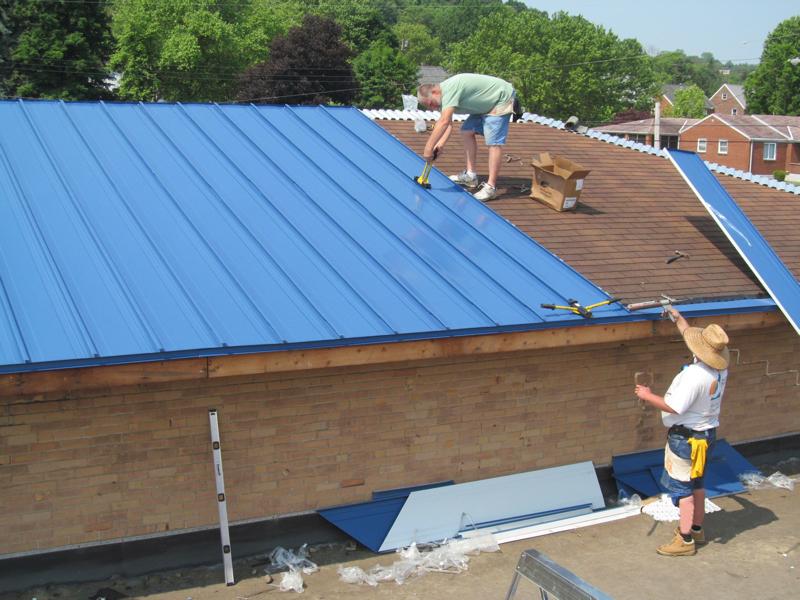When it comes to roofing options, standing seam metal roofs have gained popularity due to their durability and sleek appearance. If you’re considering an upgrade for your shingle roof, you might wonder about the feasibility of installing a standing seam metal roof over existing shingles. In this article, we’ll explore the process and considerations for installing a standing seam metal roof over shingles.

Understanding the Standing Seam Metal Roof
What Is a Standing Seam Metal Roof?
A standing seam metal roof is a type of metal roofing system characterized by its vertical metal panels with raised seams. These seams are where one panel connects to the next, creating a standing seam. Standing seam roofs are known for their modern look, durability, and longevity.
The Advantages of Installing Standing Seam Metal Roof Over Shingles
Why Consider This Option?
- Cost Savings: One of the primary advantages of installing a standing seam metal roof over existing shingles is cost savings. You eliminate the expense and labor of removing the old shingles, which can be a significant part of a roofing project’s budget.
- Energy Efficiency: Metal roofs reflect sunlight, helping to keep your home cooler during hot months. This can lead to energy savings by reducing the need for air conditioning.
- Longevity: Standing seam metal roofs are known for their durability and longevity, often lasting 50 years or more. By installing one over shingles, you extend the life of your roofing system.
- Environmental Impact: Reusing the existing shingles reduces the amount of waste in landfills, making it a more environmentally friendly option.
The Installation Process
Steps to Install a Standing Seam Metal Roof Over Shingles
- Inspection and Repair: Before installation, inspect the shingle roof for any damage or weak spots. Any issues should be repaired before proceeding.
- Installation of Underlayment: Install a high-quality underlayment over the shingles. This underlayment serves as a moisture barrier and helps prevent issues like condensation and leaks.
- Furring Strips: Furring strips are wooden or metal strips placed over the underlayment. They create an air gap between the shingles and the metal panels, allowing for ventilation and reducing the risk of moisture retention.
- Metal Panel Installation: Metal panels are installed over the furring strips. These panels are interlocking and provide a watertight seal. The raised seams characteristic of standing seam roofs are created during this process.
- Flashing and Trim: Flashing is added to areas where the metal roof meets other structures, such as walls or chimneys, to prevent water infiltration. Trim is used to give the roof a clean and finished appearance.
- Quality Control: A final inspection should be conducted to ensure that the installation is flawless and that the roof is free from defects.
Considerations and Challenges
What to Keep in Mind
- Weight: Standing seam metal roofs are heavier than shingles, so it’s essential to verify that your existing roof structure can support the added weight.
- Roof Condition: The condition of the shingle roof is crucial. If it’s in poor shape, it might not provide a suitable substrate for the metal roof. Repairs may be necessary.
- Local Building Codes: Always check local building codes and regulations to ensure that installing a standing seam metal roof over shingles is allowed in your area.
- Condensation: Adequate ventilation is crucial to prevent condensation issues between the old shingles and new metal roof. Failing to address this can lead to moisture problems.
Conclusion
Installing a standing seam metal roof over existing shingles can be a cost-effective and environmentally friendly choice. It offers numerous advantages, including cost savings, energy efficiency, and increased longevity. However, it’s essential to carefully assess your existing roof’s condition, consider the added weight, and ensure proper installation techniques to reap the benefits of this roofing upgrade. With the right planning and professional installation, you can enjoy the beauty and durability of a standing seam metal roof for decades to come.



Leave a Reply